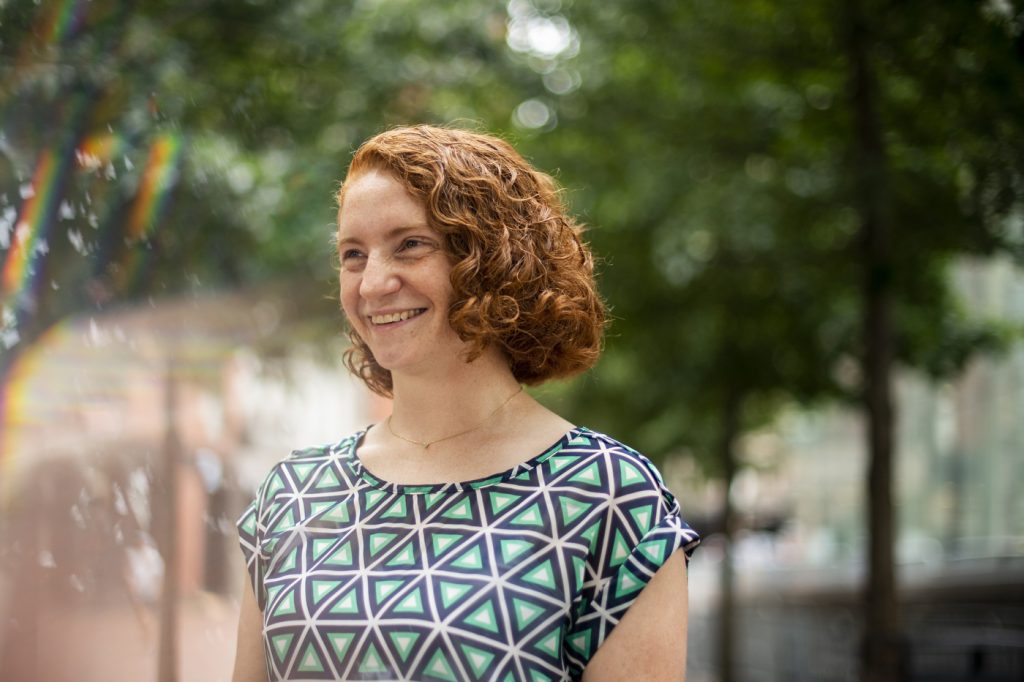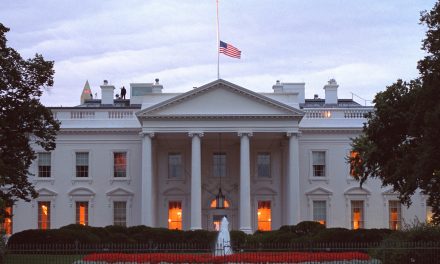In July, freshman Mayor of Boston Michelle Wu established a new, cabinet-level Director of Green Infrastructure position, tapping seasoned engineer, planner, and advocate Kate England as its inaugural appointee.
While executive-level green infrastructure positions are growing increasingly common at utilities and watershed organizations, England is thought to be the first such administrator to carry out green infrastructure policy for a major U.S. city. As Boston’s Director of Green Infrastructure, England has the authority to develop long-term green infrastructure implementation plans across city departments, furthering Wu’s vision of the city’s Green New Deal.
England described that the creation of the new position demonstrates a growing recognition of green infrastructure’s effectiveness — both as a tactic to control stormwater quality and quantity as well as improve public health, the local economy, and residents’ quality of life.
“We don’t just see green infrastructure as a stormwater tool,” England told Stormwater Report in September. “We see it as a tool to make the city more resilient, to address some of our urban tree canopy issues, to address some of our equity issues, to build opportunities for new jobs, to help with air quality issues. The list goes on.”
Familiar With the Big Picture
With previous roles at the Boston Water and Sewer Commission (BWSC) and Massachusetts Department of Conservation and Recreation (MDCR), England has experience in leading far-reaching green infrastructure initiatives.

England led BWSC’s green infrastructure program from 2015 to 2019, where she spearheaded the authorship of several manuals and design handbooks still in use by the city. She also convened Boston’s first interdepartmental working group focusing on green infrastructure. The informal group, who met once each month to discuss planned projects, incorporate green infrastructure elements into broader city initiatives, and identify opportunities to collaborate across agencies, included representatives from Boston’s public works, parks, and transportation departments, among others.
As an engineer for MDCR, England oversaw the design and construction of countless green infrastructure projects throughout the state before transitioning to a role in longer-term regional planning. Her work on climate change preparedness — which included co-leading MDCR’s statewide Climate Change Vulnerability Assessment and chairing one of the department’s Climate Action Teams — caught the attention of Mayor Wu. Wu approached England and asked her to build a broader green infrastructure program for the city with the authority to make progress quickly, working above the bounds of the various city departments rather than within them.
“Most cities and towns have a separation of labor where your public works department has one lane and they stay in it, while your parks department has another lane that they stay in,” England described. “I think the fact that these silos are still so prominent in city government is part of why green infrastructure has taken so long to really catch on.”
Extending the Professional Pipeline
England is perhaps proudest, she says, of her work with Boston Public Schools on behalf of BWSC. Collaborating with Boston science teachers and educational consultants, England developed a series of green infrastructure-focused curricula targeting 5th– and 7th-grade students. These lessons are already being taught annually at five Boston public schools, an initiative she plans to scale up citywide.
For 5th-graders, these lessons mesh with existing curricula on environmental science and the value of healthy ecosystems. The 7th-grade program is more hands-on. It tasks students not only with learning about different green infrastructure designs, how they function, and their purposes, but with demonstrating these concepts on their campuses. After identifying flooding vulnerabilities around parking lots and schoolyards, students are split up into small groups, who are each assigned a different category of green infrastructure — rain gardens, subsurface features, mixtures of green and gray infrastructure, etc. — to study. The unit, which culminates in a range of fully developed, purpose-built infrastructure proposals, intends to teach students how the flexibility of green infrastructure can accomplish multiple goals — as well as provide students with a memorable experience that makes a long-lasting impression about career possibilities in sustainable design.
“Education is a huge component of understanding and acceptance of green infrastructure implementation,” England said. “The sooner we can get it up and running in the classroom, the more likely we are to have parents hearing about it, teachers telling their colleagues about it, and students learning about it. That builds a whole population of people that, in theory, already understand the value of green infrastructure.”
That philosophy extends beyond the formal schooling process, she described. One of England’s priorities as Director of Green Infrastructure is to extend the reach of existing green infrastructure workforce and certification efforts, such as the National Green Infrastructure Certification Program (NGICP), within the city. An NGICP graduate herself, England praised the program for its accessibility and the comprehensiveness of its curriculum, as well as its ability to equip students without extensive education with the skills to secure high-paying, in-demand jobs.
“An idea that Mayor Wu thinks is very important and that I absolutely agree with is that we really want people in the city to have the skills and knowledge they need to improve their own neighborhoods,” England said. “My hope is to create a pipeline to get individuals from the various neighborhoods where we’re building green infrastructure features to get trained up and certified.”
Laying a Flexible Foundation

While England says she is still in the process of establishing the relationships and resources that will underpin her new role, she has already begun making moves. She is reforming and formalizing the working group she convened at BWSC, for example, involving upward of 40 people that include local experts on climate change, environmental justice, and workforce development. The group’s first meeting is scheduled for later this month.
She is also finalizing a new engineering policy that will require projects on public lands citywide to incorporate green infrastructure elements like bioretention planters, permeable pavers, or subsurface features into new curb extensions and bump-outs. The new policy emphasizes flexibility, England said, offering a range of applicable green infrastructure elements for developers to choose from rather than prescribing a single, “cookie-cutter” design. She says she intends for this type of flexibility to be a hallmark of her work as a policymaker.
“There’s a good amount of creativity involved in this kind of work,” England said. “I’m trying to make sure that the policies and manuals I put forward are giving people enough latitude to design what works best for a site rather than requiring something very specific that maybe is not the best fit for a particular location.”
An Engineer’s Administrator
As a career engineer rather than a public policy expert, England described her affinity for a bottom-up approach to leadership, emphasizing the needs of individual engineers and field staff just as much as broader mayoral directives and the priorities of agency commissioners.
“You have to engage designers and engineers and help them understand why we’re doing things and how we’re doing them,” she said. “Acknowledging that they’re the ones who are going to have to do a lot of this work we talk about among upper management I think is really important.”
Maintaining accessibility between the city government and its water professionals will create a more effective working relationship and ultimately facilitate green infrastructure adoption, she described.
“I want the various city departments to view me as a resource,” England said. “I want them to know that if there’s a barrier or a question or a concern, and I can find a solution for it, I’m happy to do that. We’re going to do everything that we can to give you the resources you need to implement green infrastructure in your own department.”
Top image courtesy of City of Boston

ABOUT THE AUTHOR
Justin Jacques is editor of Stormwater Report and a staff member of the Water Environment Federation (WEF). In addition to writing for WEF’s online publications, he also contributes to Water Environment & Technology magazine. Contact him at jjacques@wef.org.





